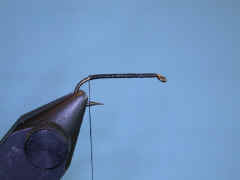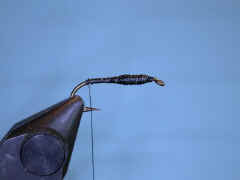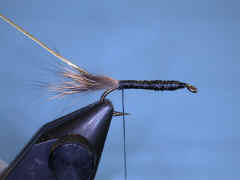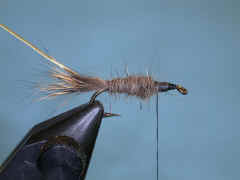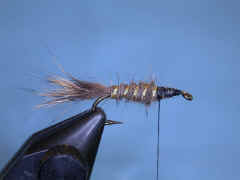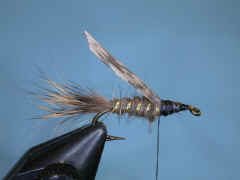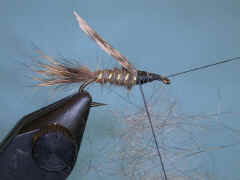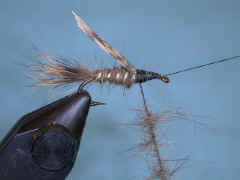|
Fly of the Month Bob Ireton brings together his experience in fly fishing, aquatic entomology, and knowledge of fly tying techniques and materials, to design and tie durable and effective flies. |

|
![]()
Volume 4, Issue 3
March 2003
![]()
GOLD RIBBED HARE'S EAR NYMPH
By Bob Ireton
I recently read that the Gold Ribbed Hare's Ear Nymph is arguably the most popular fly in the world. That is a pretty strong statement! Then I started thinking about it. This fly does mimic a lot of aquatic life forms the world over. It is a tried and true old standby. And I have read about the success of this fly. I have known a lot of fly fishermen who have had good results using this pattern. I personally have used the GRHE with great success! I would think that everyone who fly fishes would know about it soon after the Woolley Bugger. With all this in mind, I would say that the Gold Ribbed Hare's Ear Nymph could very well be the most popular fly in the world!
Fish, most of the time, feed randomly on
whatever food forms that arrives in front of them, rather than on specific
foods. A fly pattern that resembles a great number of these different food
forms makes a great 'searching' pattern. This fly certainly fills this
requirement. You can't go wrong with a good supply of Gold Ribbed Hare's
Ear Nymph's in your fly box!
MATERIALS
Hook - Mustad 3906B, Dai-Riki 060, Daiichi 1560, Orvis 167T, or equivalent.
Size 8-20
Thread - Black, 6/0 or 8/0, depending on size of fly.
Weight - Lead wire, or equivalent, approximately same diameter as hook shank.
Tail - Hare's mask guard hairs.
Rib - Oval gold tinsel, sized to match fly size.
Abdomen - Hare's ear or mask dubbing.
Wingcase - Mottled turkey quill.
Thorax - Hare's ear or mask dubbing.
TYING STEPS
![]()
Copyright © 1998 - thisyear The Buckeye United Fly Fishers, Inc. Cincinnati, OH 45242
The Buckeye United Fly Fishers, Inc is a non-profit corporation organized under section 501(c)(3) of the Internal Revenue Code, incorporated in the State of Ohio for the preservation, conservation and wise use of our fishing waters and game fish; and to assist in the protection and improvement of our natural resources
